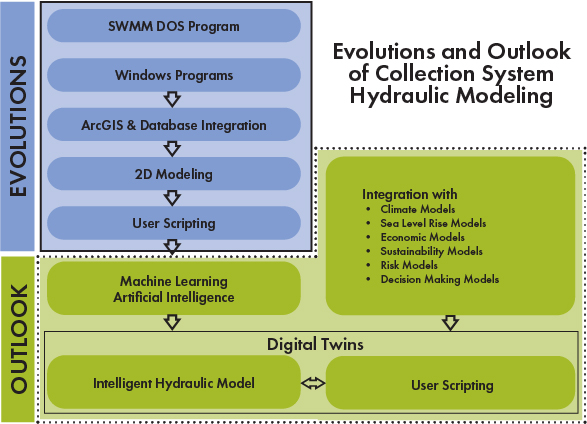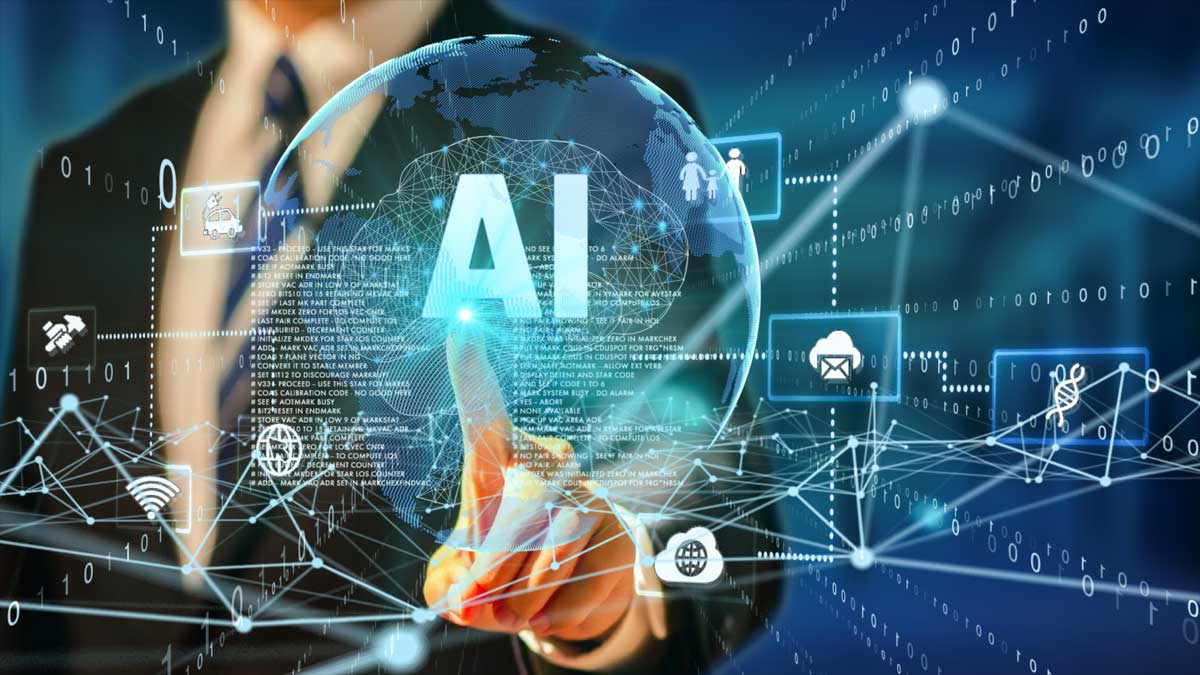After completing my Ph.D. in 2000, I secured a job as a hydraulic modeler in New York City. My primary responsibility was to model the enormous combined sewer systems to develop facility plans and long-term control plans (LTCPs) for combined sewer overflow (CSO) abatement. However, hydraulic modelers at that time were facing many challenges, such as model instabilities, large continuity errors, long runtimes, and a lack of efficient model results post-processing tools. Furthermore, most modeling programs did not have ArcGIS and database integration, which made their work even more challenging and frustrating. As a result, many modelers lost their enthusiasm and left their jobs.
Despite the challenges, I remained committed to hydraulic modeling and have continued my career to the present day. Although I am no longer a full-time modeler, I still follow the latest trends in hydraulic modeling and am passionate about its developments. Looking back at the evolution of collection system hydraulic modeling, I am excited about what the future holds. Hydraulic models have played a crucial role in planning, designing, diagnosing, and operating collections more efficiently. With the rapid advancement of machine learning, artificial intelligence, data analytics, and system monitoring technology, hydraulic models are poised to take another revolutionary leap forward. They will become a virtual replica of prototype systems capable of real-time flow, level, and velocity forecasting, making system monitoring and operation much easier. The potential of future hydraulic modeling is limitless, and it is becoming more enjoyable and exciting as technology continues to improve.
Evolutions in Hydraulic Modeling
The advent of computers in the 1960s brought a shift in hydraulic modeling from physical to mathematical models. Early modeling programs were based on one-dimensional (1D) Saint-Venant and continuity equations that simulate water flow in open channels. To make the equations applicable to gravity sewers and because of computational limitations at the time, Preissmann slots were introduced to surcharged sewers to mimic free surface flow. These modeling programs were built on Disk Operating System (DOS) programs written in Fortran programming language, making modeling a meticulous undertaking with little data pre-processing or results post-processing capabilities. Models were quite literally a “black box” with little-to-no graphical user interface or visual representation of results.
With the release of Microsoft Windows in 1985, Windows-based modeling programs were developed, including XPSWMM, Wallingford Software (now Autodesk) HydroWorks, and Danish Hydraulic Institute (DHI) Mouse. These programs enabled the creation of model schematics inside the programs, and data input and output became interactive, making model development intuitive. Later on, ArcGIS-based modeling programs, such as MWH Soft (now Autodesk) InfoSWMM, were developed, or full integration with ArcGIS, such as Wallingford Software (now Autodesk) InfoWorks CS (now InfoWorks ICM), became possible. The integration with ArcGIS allowed hydraulic modelers to incorporate spatial data such as topography, land use, soil properties, and Radar rainfall data into their models, improving the accuracy and reliability of hydraulic models and making them easier to pinpoint bottlenecks and develop solutions.
With the significant improvement of computer speed and the need to create flood maps, two-dimensional (2D) modeling was introduced more than a decade ago. Now, almost all modeling programs embody 2D modeling capability. Innovyze (now Autodesk) InfoWorks CS was one of the first widely-used collection modeling programs to release 2D modeling capability making 2D modeling easy, insightful, and enjoyable.
Today, Autodesk InfoWorks ICM and PCSWMM allow user scripting using computer languages such as Python and Ruby, enabling modelers to write their own scripts to help model development, calibration, and results processing. This significantly enhances user participation and creativity, making modeling even more intriguing.

A Promising Outlook
Hydraulic modeling has undergone significant advancements in recent years, and the future looks promising due to continued technology enhancements and increased utilization of models for decision-making. In the coming years, we can expect to see the following trends in hydraulic modeling:
Improved Model Integration: Hydraulic models will be integrated with other models, such as climate models, sea level rise models, economic models, sustainability models, risk models, and decision-making models, to reap benefits for all stakeholders. For example, hydraulic modeling will play a crucial role in assessing and managing risks as climate change and population growth continue to put pressure on collection systems. Models will evaluate the potential impacts of extreme events like storms and sea-level rise, and strategies for reducing these risks will be developed.
Advances in Machine Learning and Artificial Intelligence: The use of machine learning (ML) and artificial intelligence (AI) in hydraulic modeling will become a necessity soon. These technologies will help optimize model parameters, improve model calibration and accuracy, optimize system performance, reduce operation and maintenance costs, and help develop more cost-effective and more sustainable solutions.
Enhanced Visualization: The use of virtual and augmented reality technologies can help visualize hydraulic models in a more intuitive way. This can help operators remotely operate and maintain the systems, and decision-makers make more informed decisions.
Digital Twins: Smart cities and smart utilities are gaining momentum, and digital twins of collection systems are their centerpiece of smart collection systems. An intelligent hydraulic model will be the digital twin of the prototype collection system. Digital twins will preserve administrative, management, engineering, operational and maintenance expertise and experience, improve workflow efficiency and customer satisfaction, reduce cost and likelihood of failure, and enable better decision making.
In conclusion, hydraulic modeling has come a long way and will continue to see advancements in the future, including integration with other scientific, engineering, economic, and social models, advances in machine learning, artificial intelligence, and visualization. Hydraulic modeling will play a crucial role in shaping the future of collection system planning, management, operation, and maintenance.



